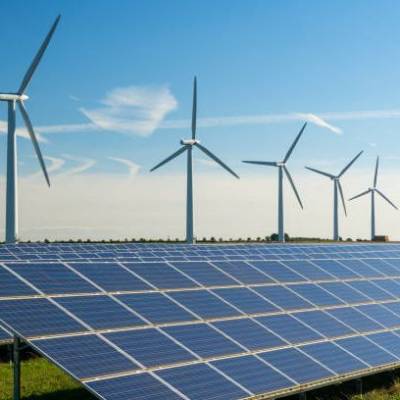

In the soon-to-be-updated Nationally Determined Contributions (NDCs) or climate targets, a debate has occurred in the government about committing to the 500GW renewable energy target and plans for decreasing one billion tonnes of cumulative emissions by 2030.
According to the media, the issue officially came up in the recent inter-ministerial discussions on updating India's NDCs. Soon, the government would take a proposal to the Union Cabinet on updating India's NDCs. It is likely to be completed in time for the December COP-27 meet in Egypt. All the countries are expected to submit their post-2020 climate targets or NDCs towards the Paris Agreement achievement. However, India is ready to overachieve its 2015 NDCs and is yet to submit its new and updated NDCs for 2030. In October 2021, at the COP-26 Glasgow talks, a template was set by Prime Minister Narendra Modi. Besides announcing the commitment to a net-zero target 2070 of India, the PM informed that by 2030, India would ensure 50% of its electric power installed would be through non-fossil fuel sources apart from achieving 500GW of non-fossil fuel electric power. However, the Ministry of Power and Ministry of New and Renewable Energy (MNRE) initiated an argument saying that the announcement of the PM must be respected, but it was not required to include it as an NDC target. They informed that an NDC assuring 500GW commitment, including to cover 50% target, would bind India to the target even if the overall demand for electricity in the country does not increase commensurately by 2030. Apart from that, a target of 500GW NDC would also prevent any new renewable energy project to be counted towards international carbon markets as Article 6 of the Paris Agreement only counts projects outside of NDCs. However, to accomplish the 500GW RE target, practically every renewable energy (RE) project would need to be included. The second proposal is being cautioned regarding the achievement of a one billion-tonne decrease in India's cumulative emissions from 2021 to 2030. Currently, the carbon dioxide emissions of India stand at around 2.8 gigatonnes and are projected to reach 4.48 gigatonnes by 2030. It would need huge decarbonisation drives and directives for clean fuel switches even as technologies for such large scale switches are untested so far. The ministries have red-flagged this commitment in NDC. This commitment would invite severe global scrutiny of these targets as the country is at a vital stage of development which would involve some growth in GreenHouse Gas emissions. The announcement of India to decrease emission intensity of the country's gross domestic product (GDP) by 45% by 2030 compared to the 2005 level, if accomplished, would be able to adapt any such ambition. Image Source